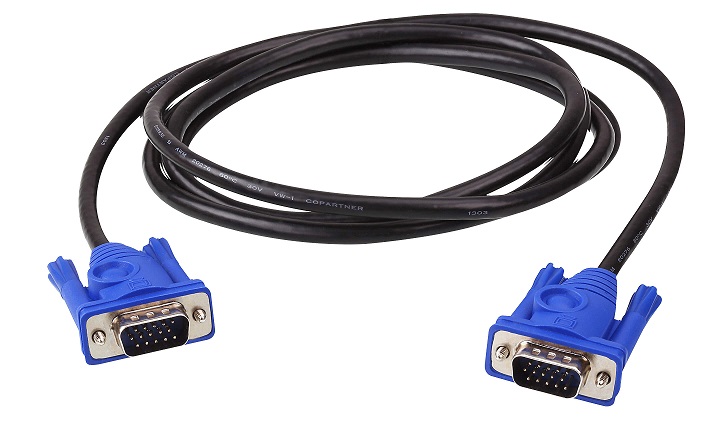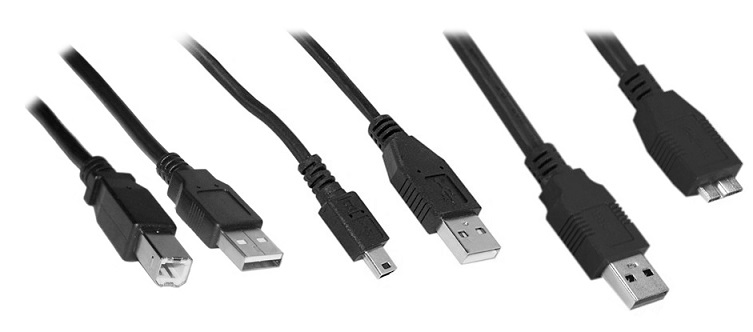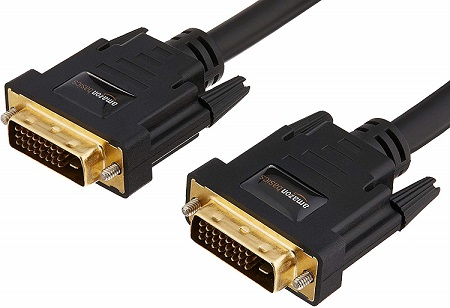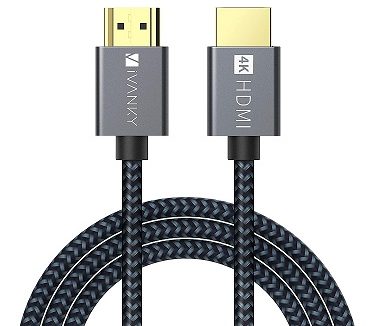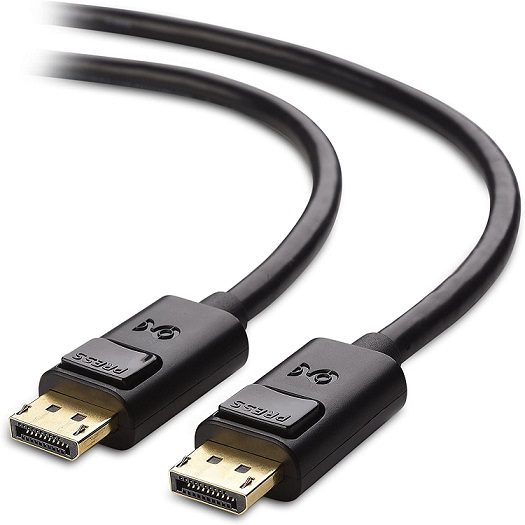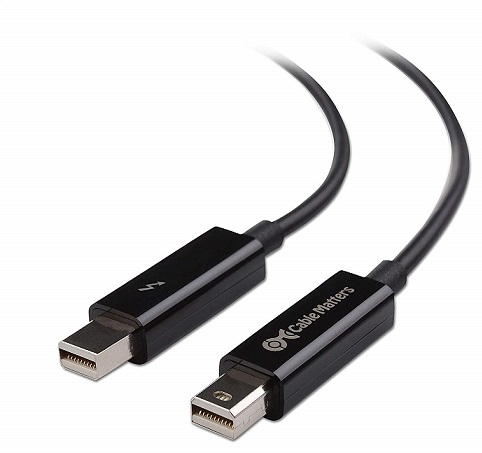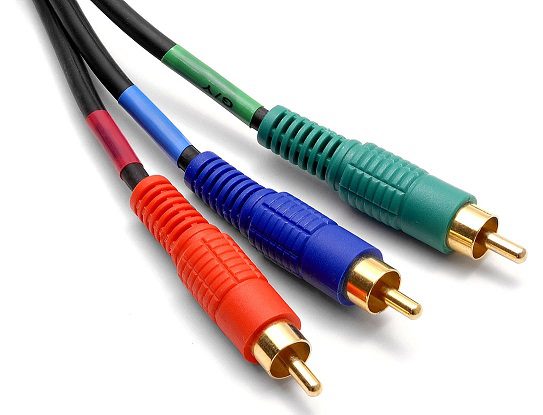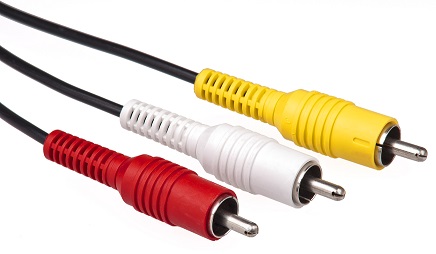Cables are quite a common sight in the modern world. You use it to recharge your Smartphone or tablet, or laptop, use it to connect multiple devices, and complete other works.
Technologically speaking, a cable is a thick wire or a group of wires banded together inside an insulator covering like rubber or plastic. Cables are used in electricity transportation or carrying electronic signals. It is also known as plugs, cords (which is quite a popular name) and connectors.
A monitor cable is a specialised cable that serves the purpose of connecting the CPU parts. If you want to set up a PC or want to connect different devices with your laptop. Here, you will find a detailed guide on monitor cables and how to use them.
Outline
ToggleMonitor Cable Types
There are different types of monitor cables- HDMI cables, USB Cables etc. Each of these monitor cables has different purposes and are equally important for setting up the whole workstation.
1. VGA Cable
The acronym VGA stands for Video Graphics Array. It is a cable that is used to send video signals from a device to another. The VGA cable works as a connection between the monitor and your PC screen and sends video waves. This AV cable was first discovered and patented by IBM in 1987.
At present, VGA cables are found for video streaming of different resolutions- 1080p, 480p etc. This cable can receive analogue RGB signals and transmit the video signals after the RGB one.
Please note that VGA cables are only able to transmit videos. They cannot transmit audio signals.
Identification
- A VGA cable comes with two ends, a small pin-sized end and another in a 15-pin D-sub port which looks like a square-shaped pin with 15 homes in it.
- Since both ends have different ports, it is called a male-female monitor cable. Its different ends are necessary for transmitting signals in only a single way. The D-shaped plug is fitted in the screen while the pointed edge is fitted in a plug point of the monitor. You will find most of the VGA cables come in blue or back colour.
Benefits
The VGA cable helps to transmit video signals in a single direction. With the help of the VGA cable, you can play videos on your PC.
2. USB Cables
Universal Serial Bus cables or USB cables are now extremely common. These are used for connecting units of a PC, for charging devices and so on. Moreover, USB cables are also used to connect peripheral devices like printers, mouses, cameras etc.
You can find different types of USB cables in the market which are used for different purposes.
Types of USB Cable Connector
a. USB 2.0 Type A
USB A cables are one-way cables and are used widely. One way of this cable is a smaller pin, with another one having a larger pin. Since it is a one-way cable, it will only go into the port one way. The side with the USB symbol or USB word written is you need to connect to your PC. It usually works on the host controller of the device.
The USB A cable is found in many types. The USB 2.0 port is often used in mouse, phone chargers etc.
On the other hand, the USB 3.0 Type-A comes with an additional pin. Hence, it is wider with two small pins protruding on both sides of a regular 2.0 port. It is commonly used for transferring data with a bandwidth of 5 GHz.
Pros
- Provides a downstream connection
- It prevents incorrect connections.
Cons
- It is a larger-sized cable and is not suitable for mobile and smaller devices.
b. USB Type B
The USB Type B cable is usually found in peripheral devices like printers, porting devices, scanners, which are larger. It offers a secure connection between the device and the PC. But, the USB B type is the older type of cable, which is not used widely at present.
c. USB type C
At present, type C cable is widely used for charging devices and as a connector for mobiles with a PC. It is a smaller rectangular port that can be used in upstream sockets and host controller ports of a device.
The Type C cable can transmit the data at a speed of 10 GBPS. It is also able to transmit both audio and video signals.
You will find Type C Ports with USB 2,0 port, 3.0 port, 3.1 gen port and Gen 2 ports.
d. USB Mini B
It is also another port that is used for peripheral devices. It is a smaller plug with dive pins and an extra ID pin for supporting the OTG devices. It hence allows the mobile devices to work as a hot and provides an electrical connection to the smartphones. Type Mini B cables are quite common in older Smartphone models.
e. USB Micro B
USB Micro B is another connector slimmer than Mini B but offers faster data and electricity transmission speed. It also comes with 5 pins and is compatible with smartphones, DSLRs and many other peripheral devices.
3. HD 15 Monitor Cable
The HD 15 Monitor Cable is a type DB style common connector. It is usually used in computers for audio or video transmission and data applications.
An HD15 Monitor cable is a female to male cable. It comes with 15 pins arranged in five pins in three rows. It is a type of high-density DB-Style connector. It is usually used for a video interface but can also be used for an audio interface.
The only con of this monitor cable is that it only supports the resolution of 680p*480p and is not suitable for new and more recent devices.
4. DVI Cable
The DVI cable or the Digital Visual Interface cable is a special type of digital video interface. It was patented by the Digital Display Working Group or DDWG. This monitor cable supports analog video signals and digital video signals. Hence, if you use a DVI cable, you only need one cable for all kinds of video transmission.
It is also a male-female cable with different ports at both ends.
The DVI cable looks quite similar to VGA cables but has longer flat pins.
DVI cables come with a cable length of a minimum of 5 meters and can be coupled with extenders also.
Types of DVI Monitor Cable Connectors
Here are common DVI cable and port types-
- DVI-D Single Link
It is an AVI connection which only provides digital-only displays of resolution up to 1920p and 1080p. It’s one end comes with ten pins, with a total of six rows of three diagonal pins and an additional pin.
- DVI-D Dual Link
DVI-D Dual Link cable comes with two data link functions and offers video transmission of resolutions like 2048p. Its point has a total of 25 pins, with a single pin and three rows of eight diagonally placed pins together for high rate video transmission.
It first collects video signals from the video card of the device and changes them into analog signals. The cable then transmits the signal to the desired device. At the output port, the signal changes to a digital signal for display on the monitor.
- DVI- I Single Link
The DVI-I single link cable can transmit both digital and analog signals simultaneously. It is often used in analog display, digital-to-digital signal, or analog-to-analog signal. It has a total of 23 pins.
- DVI-Dual Link
DVI-Dual link cables also come with an extra data link for missing signals for high-resolution videos. It combines both digital and analogue signals through a single cable. It has 29 pins.
- Mini DVI
The Mini DVI cable supports both digital and analogue signals. It is a compact and smaller sized cable, which makes it good for laptops. Mini DVI is usually found in Apple devices.
5. HDMI Cable
HDMI is the acronym of High Definition Multimedia Interface. It is widely used in recent and modern computers for connecting peripherals and other devices. A regular HDMI cable comes with four shielded twisted pairs of pins in the socket. It helps in the transmission of uncompressed and decompressed audio and video signals to the screen or projector.
HDMI cables were first introduced in April 2002. The designers wanted to provide a connecting cable that had all the features like the DVI.
- HDMI Cables Feature Explained
The HDMI cables are usually used in place of analog cables. They have allowed devices to transmit the audio and video signal from a single cable simultaneously.
- How to Increase the Distance Between HDMI Signals?
Even though the HDMI cables come with a fixed range, you can use HBase T technology, DMI switches or HDMI operators to increase the signals of a cable.
HDMI Monitor Cable Types
HDMI monitor cables come in five variations-
- Standard HDMI cable
It is the most common cable which is used in Tv connections. This type of cable can only transmit 720pixel videos.
- Standard Automotive HDMI cable
Standard Automotive HDMI cable is an enhanced version, a high-performance cable with the capability to send stronger signals.
- Standard HDMI Cables with Ethernet
It is also used widely and has all the features like a standard HDMI cable. But it has a device networking function that can be used for Ethernet connection also.
- High-speed HDMI cable
A high-speed HDMI cable is ideal for videos of 1080p.
- High-speed HDMI Cable with Ethernet
It is similar to a High-Speed HDMI cable. It also comes with a dedicated channel that provides networking channels for devices. Hence, you can also use it for an internet connection.
HDMI Connectors
The best part of HDMI cables is their HDMI connectors. Due to the wide range of connectors, it can be used in different ways and fit multiple devices.
HDMI cables are made of female cables, and the female ports have design variations according to the type.
HDMI connectors are of five variants-
- Type-A connector
It has two connectors, one measuring 13.9mm*4.45 mm, and the other one is 14mm*4.55mm. The female connector has a total of 19 pins. It can be used as a DVI-D link cable.
- Type B HDMI connector
Type B connector is made with 29 pins, with each connector having the dimension of 21.2 mm*4.4mm.
- Type C connector
Type C connectors are also known as mini HDMI connectors. It comes with 19 pins like type A but is smaller in size. The Type A 1.3 version has a dimension of 10.42 m*2.42mm. It also supports type-A connectors.
- Type D HDMI connector
The Type HDMI connector is also known as a micro HDMI due to its small compact size. It also has 19 pins, and the dimension is 6.4mm*2.8mm.
- Type E HDMI connector
Type E HDMI connector was first made available in the 1.4 version. It is common in automotive applications and allows to connect regular cables with the automotive machine.
6. DisplayPort
DisplayPort is a display interface with packetized data transmission. It is similar to HDMI but is commonly used in PCs. It offers high-definition video and audio transmission alongside some extra variations.
The common variations are-
- DisplayPort 1.2 is used for 4K video transmission with a rate of 60Hz.
- The Displayport 1.3 is also used for 4K video and audio transmission with a 120Hz and 30Hz rate.
- Display port 1.4 can offer 8k video transmission with HDR quality at 60Hz.
- There is also another version called Mini DisplayPort, which is used in iMacs, Laptops. It is small in size and is ideal for smaller devices.
7. Thunderbolt
The thunderbolt cable is a cable discovered by Apple Inc. It supports Thunderbolt technology. Hence, a thunderbolt cable can support data transfer in two independent chambers of a speed of 10Gb per second. It is common in Imac, ipads and MacBooks.
There is also another version of Thunderbolt 3, which is a model developed by Intel. It supports USB port C connection,
8. Component
Components are classic cables used for audio transmissions. It was quite common in early computer devices and is still used in some TV connections. It has three pins together. The red and white pins support audio connectors. In contrast, the yellow pin divides video into three components- brightness and two for colour information. It is also known as YPbPr component video.
These cables transmit audio and video signals with an analogue signal. It is quite affordable and easily available.
9. Composite
Composite cables are just for video transmission purposes. It is a single yellow coloured cable which supports AV transmission. It sends video signals to the monitors. It is a single port male connector. The main drawback of composite cable is that it can only transmit standard definition videos through regular analogue signals.
Conclusion
With so many cable variations, you will always find monitor cables that suit your needs. Even though HDMI cables and USB cables are now extremely popular, other cables are also used.
You need to use monitor cables with caution. The pins should not be damaged, and you must not use the cables with care and prevent the tangling of different cables for further damage. Besides that, always try to purchase cables from reputed brands for the best possible experience.

